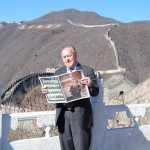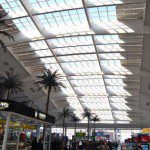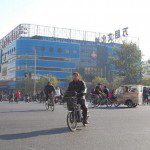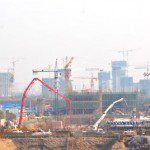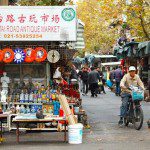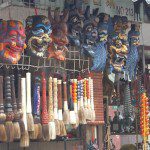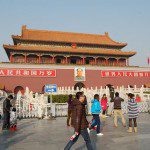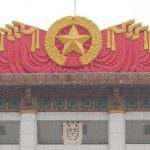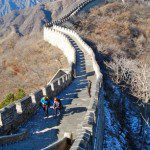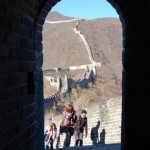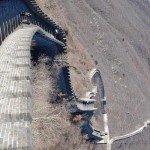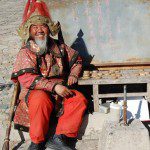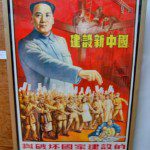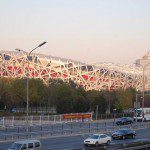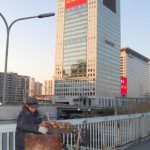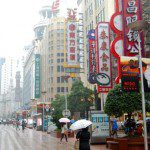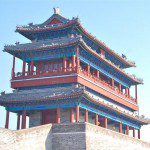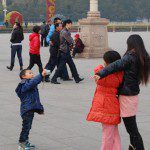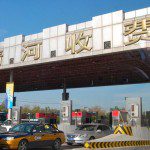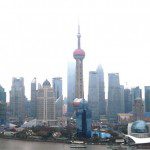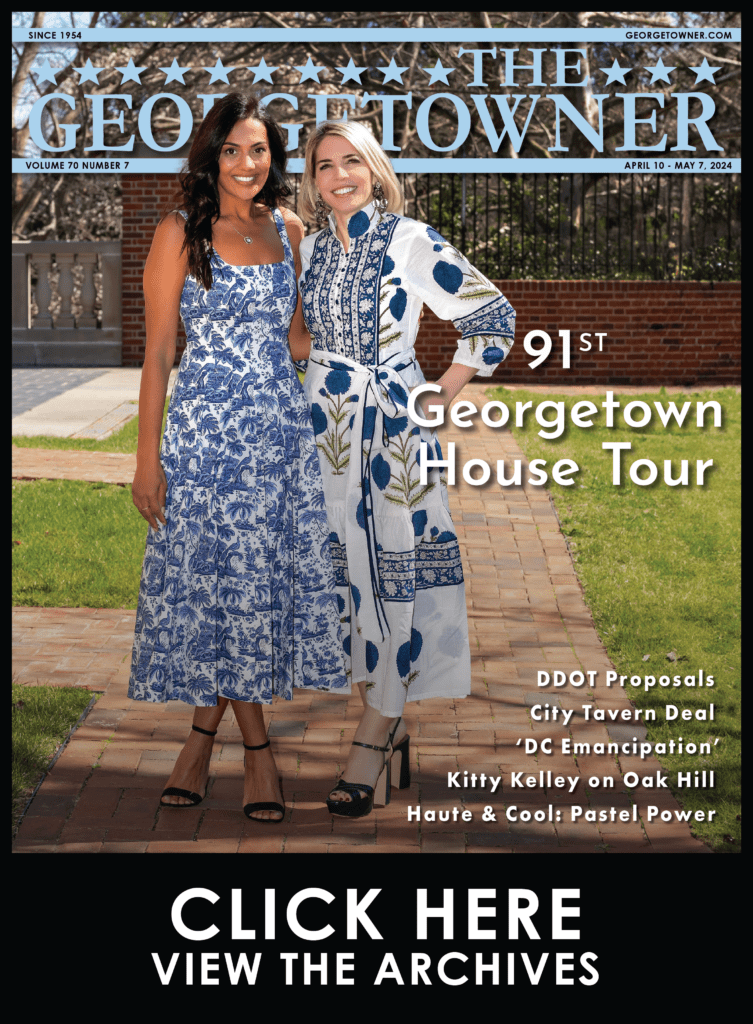Beijing, Shanghai in 7 Days
By • December 12, 2012 0 1414
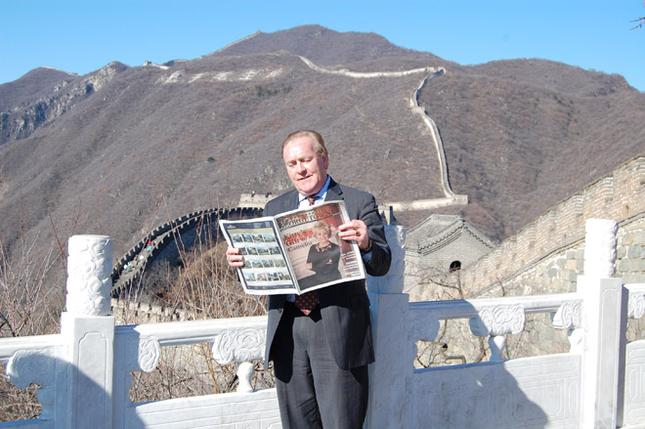
“Want to go to China?” asked a media colleague. On his airline points, no less, so that he would rack up miles for premier status. Barely able to say, “Ni Hao,” with passport in hand, I applied for a visa on the Chinese Visa Office on Wisconsin Avenue in Glover Park.
Regarding my business buddy — whom I’ve known since our days at Georgetown University and worked with at conventions — I foresaw not only a dizzying week of movement and sightseeing, but a busman’s holiday. “We’re going to the warehouse,” he quipped.
Aloft from Dulles Airport, the pilot informed us that the 14-hour, non-stop flight, fewer than 7,000 miles, would take us over Greenland, the Arctic Ocean and Russia to Beijing. Snow-capped mountains north of the capital, as the plane flew south from Siberia, was the first glimpse of China. “On your left, you may see parts of the Great Wall,” the pilot said in her wake-call.
After customs check-in, officers simply waved us past luggage detectors. Amid info boards and ads, we noticed a display of items, such as weapons and drugs, not permitted to bring into the country that included a can of Spam.
“Welcome to Beijing,” said the friendly couple, walking near the City Wall Marriott. The street was filled with food stores, some slightly familiar, others quite local. First dinner in Beijing? Why, Peking Duck, of course. It was curious that there are no fourth or 13th floors at this Marriott but smoking allowed in some rooms. Bells at the old city wall were heard at certain hourly intervals.
A first day in China demanded a walk through Tiananmen Square. During the off-season, we seemed a bit out-of-place: two big, white guys from the West. A few persons took photos with us. Another at the hotel asked if we were in town for the Communist Party Congress. Not so, but my fellow traveler recalled his visit to Beijing 30 years ago as full of bicycles not cars, and much more haze.
At the square is Mao Zedong’s tomb, the People’s Palace and the National Museum. After the obligatory photo in front of the Tiananmen Gate with Mao’s large picture was a foray into the Forbidden City, a stunning micro-cosmos of beauty in the center of Beijing. This you can barely absorb in one day but surely see the Hall of Supreme Harmony, its biggest structure, and the Palace of Heavenly Peace. Yes, there is a moat.
The biggest must-see is the Great Wall of China, a day trip, with sections of the wall just 40 miles north of Beijing. We bypassed the touristy wall at Badaling with its Starbucks and ascended to the Mutianyu section, riding in a cable car; Bill Clinton used number 26, a sign assured. The views and epiphany-of-place reward the trek, if you can get past the souvenir hawkers. Standing atop the wall is one huge check on anyone’s bucket list. Here is one of those worldly sites where the reality exceeds the dream.
After the jade and enamelware (cloisonne) outlets, we stopped at the Olympic Park for the 2008 games and finished the day at Dr. Tea, sampling and buying a bit of all the tea in China. Vladimir Putin took some tea here. Before meeting our train at the new Beijing South Station the next morning, we shopped on a wholesale street few visitors frequent.
The train ride from Beijing to Shanghai — about 820 miles in five hours — was a real eye-opener, revealing a huge amount of cranes erected in the cities en route. This nation of contrasts is in a rush to maintain its economic growth.
Coming into Shanghai, we felt a little lost at the station before catching a cab to the Hyatt on the Bund. Nearing the Embankment, we stared at the buildings and then skyscrapers of Pudong across the Huangpu River. The colors and brilliance were potently, artfully electric and excited the mind’s eye.
The view from my 27th floor hotel room offered the iconic Oriental Pearl TV Tower, Jin Mao Tower and cityscape, and the Vue bar and restaurant atop the Hyatt is a perch not to be missed with its hot tubs — and all of Shanghai before you.
A place in motion, Shanghai is truly a city of the world and the future. At the Shanghai Circus, with its acrobatic acts, the ringmaster spun a porcelain vase on his head. I was eager to walk along the Bund and see the Customs House and old Signal Tower, as seen on “The Amazing Race.”
Next to modern facades are shops and eateries for city folk along with major Art Deco architecture from the 1930s; lunch at the Hotel Metropol. Nanjing Road stores are also lighted at night and have all that is offered on Fifth Avenue or Rodeo Drive as much as Xin Tian Di looked like it could be in Scottsdale or Santa Monica. Near the Sightseeing Pedestrian Tunnel, the Super Brand Mall looked like home with its “Merry Christmas” signs.
“Buy, buy, Shanghai,” they say. This city is a shopper’s paradise. A fine scarf, perfect necklace or leatherware — perhaps a Hello Kitty pencil case or an Angry Birds slingshot — at No. 1 Department Store? “What are you looking for?” said an unwanted street shopping guide. “I can find it for you.” How about a Mao ashtray or watch at the Dongtai Road antique market? Ready to take another taxi?
There is so much to this cool, cosmopolitan city of 23 million: from the past, the French Concession, Jade Buddha Temple, Jesuit Village or more. In the future-is-now category, the MagLev (magnetic levitation) train zips 19 miles to the airport at a maximum of 431 kilometers per hour (268 mph) at just over seven minutes. Had to try that.
Saying bye-bye to China, we flew to Los Angeles — 6,500 miles in less than 13 hours. After those shiny, big stations and airports, LAX seemed a little tired. “It’s not the MagLev,” intoned my fellow globetrotter. To combat jet lag, we spent a day in Los Angeles. Back in Washington, it had been a complete circumnavigation of the earth in one trip.
See more photos from Robert Devaney’s trip to China at www.Georgetowner.com.
- Reading the Georgetowner at the Mutianyu section of the Great Wall of China | Robert Devaney
- Yelp
- Courtesy Flickr user M.V. Jantzen

